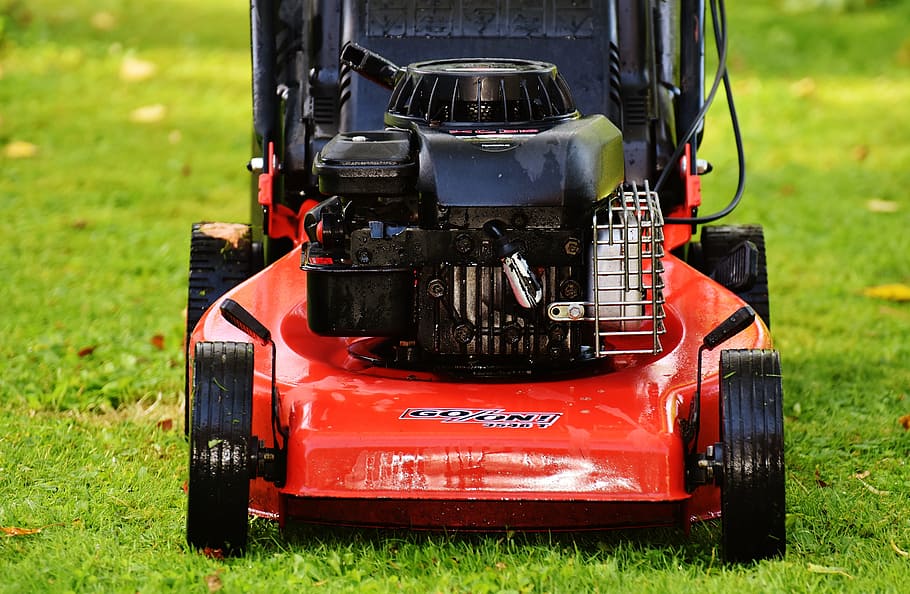To ensure that your lawn is in top shape it is necessary to change the blades on your lawn mower on occasion. It is easy to replace the blades. It is all you need are the most basic tools, and a few steps.
The most durable lawn mower blades are made of sturdy materials for construction that can make sure they last for longer without becoming worn out quickly. They should also be able to stand up to massive amounts of force.
Deck Blade
The cutting blade is the primary part of a lawnmower. It is encased in a casing called a deck and comes in various shapes, sizes and styles. Each one has specific requirements, and must be able to withstand fast contact with grass as well as other items.
Standard blades feature a curved surface that lifts the grass and cuts it in the shape of a scissor. The curvature of the blade aids in dispersing the clippings. This kind of blade needs less power than a high-lift blade, so it's ideal for cutting grass on the dirtiest or most sand-covered terrain.
The reel blades or cylinders consist of 3-7 helical shaped blades which are joined to create an elongated cylinder reel. These blades are employed in gas or reel-powered lawn mowers. It's the most common model and is easy to replace. A lot of hardware and lawn care stores can sharpen and balance the blades for a small charge.
Standard Blade
The most common type of blade for lawn mowers is the blade that's flat. The blade is specifically designed to cut grass however, it does not come with particular features, such as bagging or mulching. It is able to provide minimal suction and is suitable for any kind of grass.
Blades for high-lift mowers are angled so that they maximize airflow. They create a vertical suction which draws the grass towards the deck. It gives a crisp finish for your lawn. These blades are also ideal for mowing on sandy terrains.
If you decide to utilize these kinds of blades for your lawn mower ensure that the holes for locating shear pins are correctly aligned to the center bolt hole in the mower. In the absence of this, the blade will not sit on the boss of the blade correctly. This can lead to the blade wearing out faster than expected. To make sure that the shear pins are set properly, it is suggested to refer to the mower's manual or parts catalog for the exact location of the holes.
Lifting Blade
These blades circulate air to prevent clogging within the mower deck, while still delivering a high-quality cut. The blades are bent inward creating a vacuum which lifts grass and then delivers it into the bagging system or side discharge.
The lifting effect of these blades can also improve the quality of cuts when they are used on grass that is longer, where a lower lift blade might struggle to get an uniform cut. They are also ideal for those who want to mulch lawn clippings and can be utilized with the 2-in-1 or 3-in-1 blade.
These blades are only an issue if own a lawn mower that has a strong engine. They are also not recommended for sandy or dusty terrain in which grit and sand can be kicked up and deteriorate the mower deck more quickly.
Mulching Blade
A very popular option for those who don't use baggers, this blade allows the clippings to be mulched, discharged or ejected from your mower's discharge chute. With larger "wind wings" as opposed to the ones on regular breakthrough lawn mower blade sharpener mower blades these blades can make an effective airflow underneath the grass clippings to ensure they don't get kicked into the air, and they can safely be ejected from your mower.
To ensure your lawn mower's mulching blade has been properly installed, examine the bevel (the slope at the blade's edge responsible for cutting) to make sure that it is pointing downwards to the ground when mowing. The blade's sharp edges may damage your deck if it's not properly installed. Be sure to ensure that the blade is not bent to an unnatural angle. This can make it ineffective to cut higher grass. This is typically the sign of a broken blade.

Работает
Пожалуйста, Вход или Зарегистрироваться

